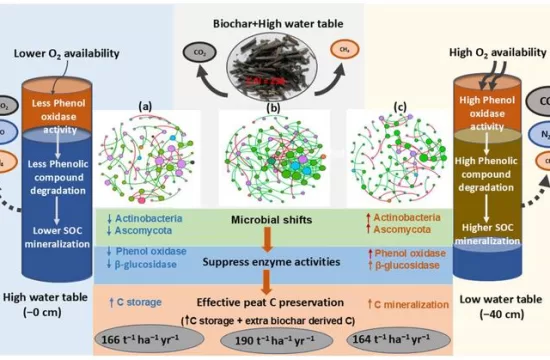
Microbial fuel cell (MFC) technology has received considerable attention in the field of wastewater treatment over the past decade. This technology can simultaneously generate electricity and treat wastewater by cultivating electrochemically active microorganisms.
However, recent discoveries have shown that MFC systems can be combined with soil to form soil microbial fuel cells (SMFCs), or further combined with plants to form plant microbial fuel cells (PMFCs).
As novel green energy technologies, they can convert organic matter in the soil or organic matter produced by plant photosynthesis into electrical energy through microorganisms.
In this study, in addition to exploring the power generation effect, in response to the government’s and international emphasis on carbon reduction, researchers at National Taiwan University also investigated the effects of SMFCs and PMFCs on reducing greenhouse gas emissions from soil. The study is published in Journal of Cleaner Production.
Furthermore, in some southern regions of Taiwan, soil salinization is a serious problem that adversely affects soil ecology and threatens agricultural production. This study also explored the potential of using SMFCs and PMFCs for the restoration of salinized soils.
Researchers found that SMFCs and PMFCs can successfully generate electricity in normal soils. The voltage generated in salinized soils is relatively low, but the voltage of PMFCs gradually increases after several months of cultivation.
“Overall, this study demonstrates the application potential of SMFCs and PMFCs in both normal and salinized soils in producing electricity and mitigating greenhouse gas emission,” says Prof. Chang-Ping Yu, corresponding author of the study.
In addition, we found that SMFCs and PMFCs have different effects on reducing methane emissions in normal and salinized soils, with SMFCs showing better performance in normal soils and PMFCs showing better reduction effects in salinized soils. During the study, we also observed that PMFCs can reduce the soil conductivity in salinized soils; the specific mechanism still needs further investigation.







